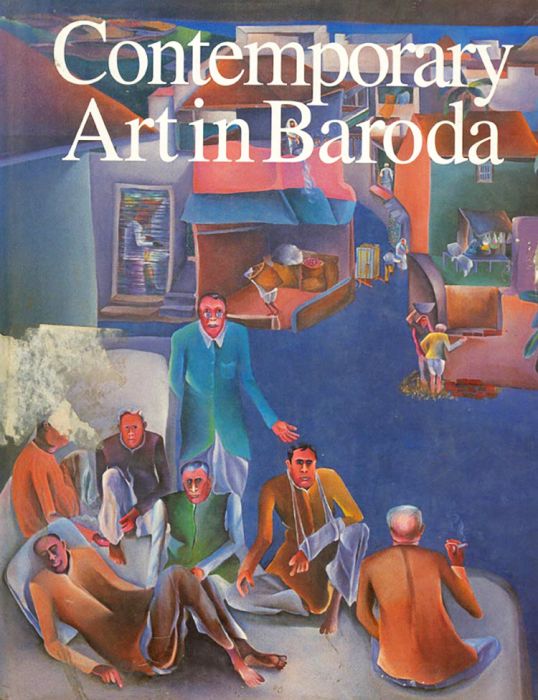Contemporary Art in Baroda
The volume Contemporary Art in Baroda traces the evolution of Baroda as an important, centre of contemporary art and art education, from the nineteenth century up to the last decade of the twentieth century. It begins with a discussion, in the first chapter, of the historical background of culture in the erstwhile state of Baroda, leading up to the establishment of the Faculty of Fine Arts-—an institution that pioneered art education at the university level. The tradition of murals, elaborately carved bavelis and painted temples; the arrival of Raja Ravi Varma at the invitation of Maharaja Sayajirao Gaekwad that resulted in the formulation of an east-west dialogue; the esta¬blishment of a school of art at Kalabhavan and a specially designed museum and art gallery with the intention of imparting visual education in eastern and western forms of art; the commi¬ssioning of Nandalal Bose to paint murals at Kirti Mandir—all these were factors that came together in diverse, eclectic, yet sustaining ways, to shape the art and culture of the city,
The elaborate second chapter focuses on two decades of the building of the Faculty of Fine Arts, and the evolution, of a committed system of art education that viewed art and knowledge as complementary forms and envisioned the new artist as a creative and articulate individual, aware of his past and present, constantly engaged in contemporary discourse. This vision of the pio¬neers of art education at the Faculty—Markand Bhatt, V.R. Amberkar, N.S. Bendre, Sankho Chaudhuri, K.G. Subrarnanyan, as also the careers and works of these artists and those of the first generation of artists trained there, are discussed in detail.
The third and fourth chapters trace issues arising out of the changing art scenario and movements from the seventies till the present day, in the context of the national and interna¬tional art scene. This is accompanied by a dis¬cussion of the works of Jyoti Bhatt, Jeram Patel, Raghav Kaneria, Nagji Patel, Bhupen Khakhar. Nasreen Mohamedi, Vivan Sundaram, Laxma Goud, Mrinalini Mukherjee, Dhniva Mistry, N.N. Rimzon and several others who have significantly contributed to contemporary art in India.
Art in its historical context; art and education as life-vocations; art as an effective deterrent to dehumanization; the formation of a distinct vision of art through a mingling of the past and the present, the immediate and the distant—these are some of the complex issues that the book attempts to articulate through its discussion of the work of three generations of artists in Baroda.

